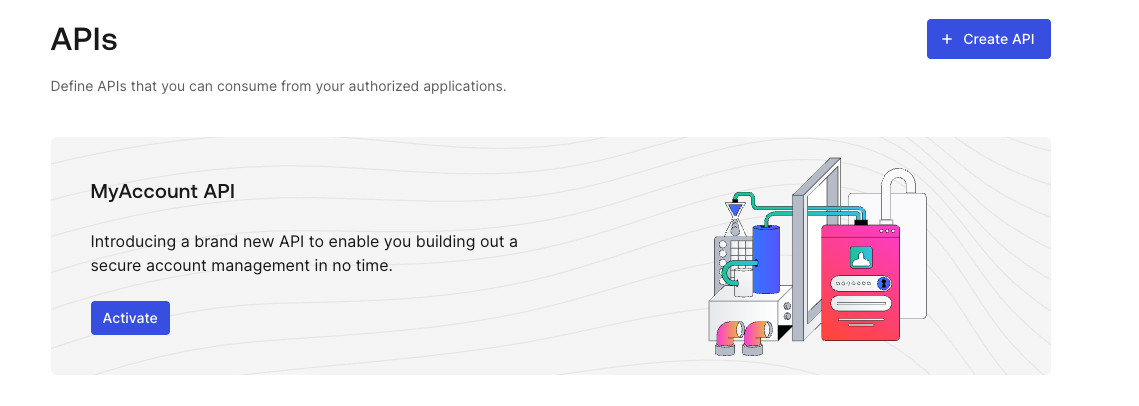The My Account API is available in Limited Early Access.By using this feature, you agree to the applicable Free Trial terms in Okta’s Master Subscription Agreement.To learn more about Auth0’s product release cycle, read Product Release Stages. To participate in this program, contact Auth0 Support or your Technical Account Manager.
Using Auth0 domain vs. custom domainThe My Account API supports using your canonical Auth0 domain or your custom domain, but you must use the same one throughout the entire process, including:
- Getting an access token
- Setting the
audiencevalue - Calling the My Account API endpoint
Activate the My Account API
You can activate the My Account API for your tenant in the :- Navigate to Authentication > APIs.
- Locate the MyAccount API banner.
- Select Activate.

require_client_grantfor user flowsdeny_allfor client (machine-to-machine) flows
allow_all, which allows any application in your tenant to request any scope from the My Account API.
Because the My Account API exposes sensitive information and operations, Auth0 does notrecommendusing allow_all for user access flows. You should follow a least privilege principle with the My Account API to ensure applications only get access to what they truly need, minimizing potential security risks.
The final permissions granted to the application will be determined by the intersection of the scopes allowed by the application API access policy, the Role-Based Access Control (RBAC) permissions assigned to the end user, and any user consent given (if applicable).
You cannot update the application API policy for client access to the My Account API, which means you cannot access the My Account API using the Client Credentials Flow.
Get an access token
You can get an for the My Account API in the same way you’d get an access token for one of your own APIs.If you’re going to allow the My Account API to perform sensitive operations (such as enrolling an authentication method), we strongly recommend that you use step-up authentication to enforce additional security policies through multi-factor authentication (MFA).
- Call Your API Using the Authorization Code Flow
- Call Your API Using the Authorization Code Flow with PKCE
Audience
The of the My Account API ishttps://{yourDomain}/me/.
Scope
The My Account API supports the following scopes:| Scope | Description |
|---|---|
create:me:authentication_methods | Allows the user to enroll a new authentication method. |
read:me:authentication_methods | Allows the user to view existing authentication methods. |
updated:me:authentication_methods | Allows the user to modify existing authentication methods. |
delete:me:authentication_methods | Allows the user to remove existing authentication methods. |
read:me:factors | Allows the user to view the factors they can enroll. |

